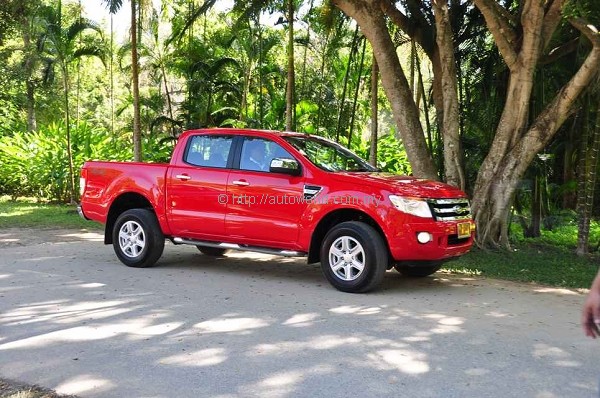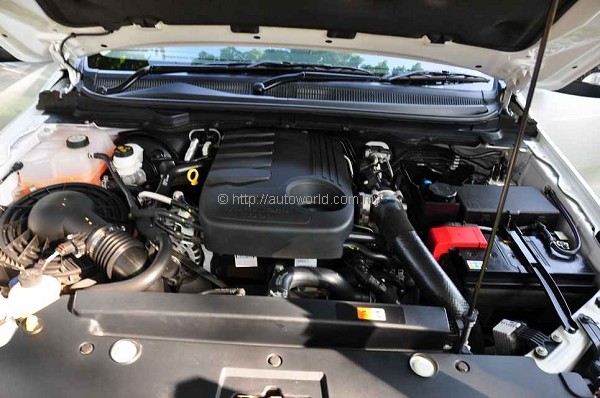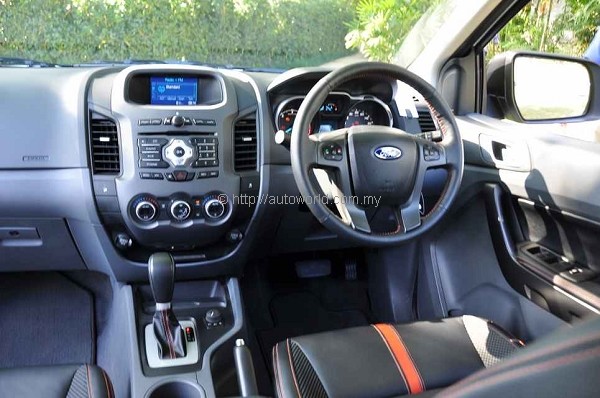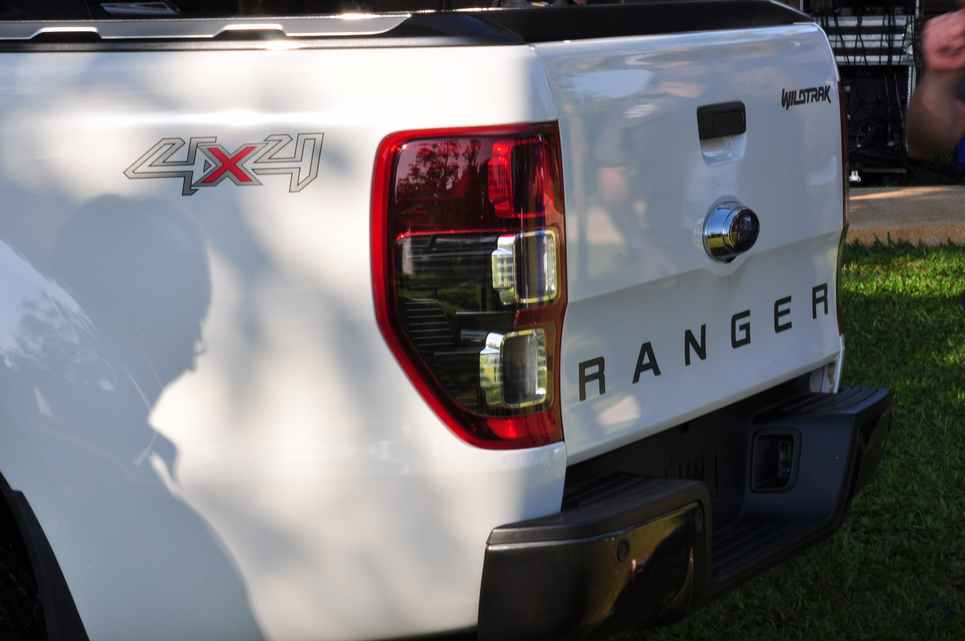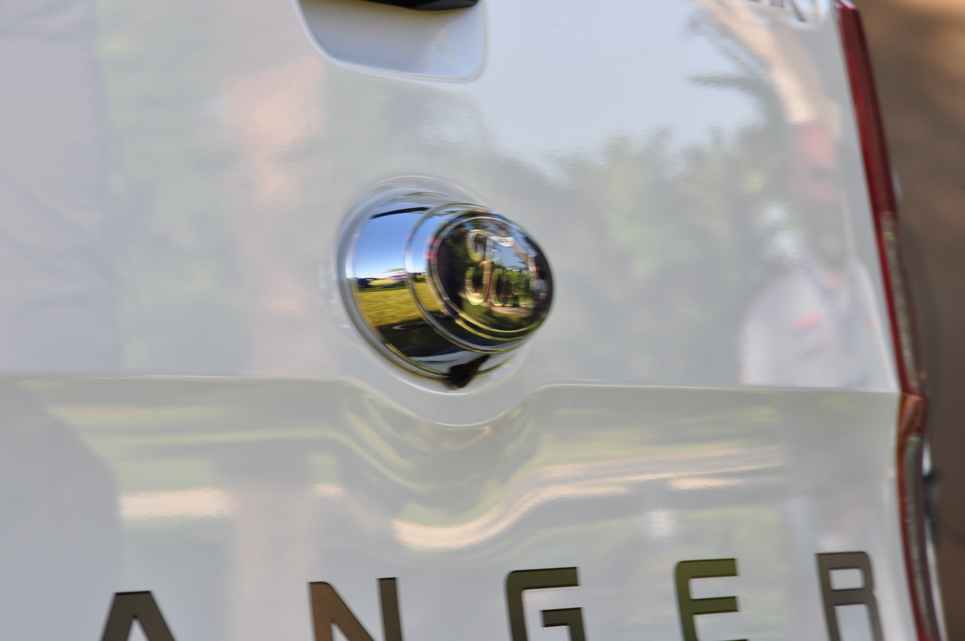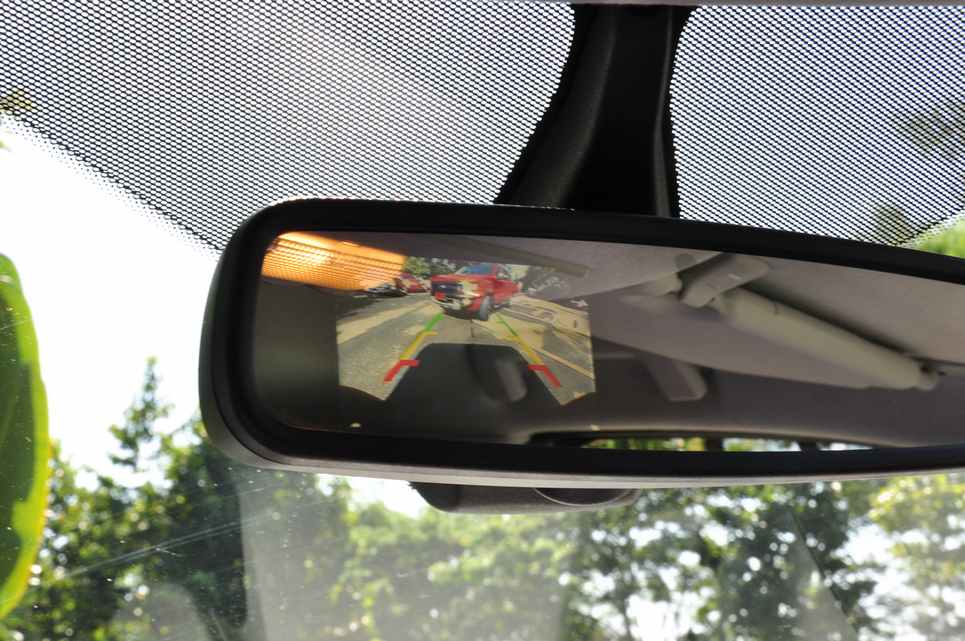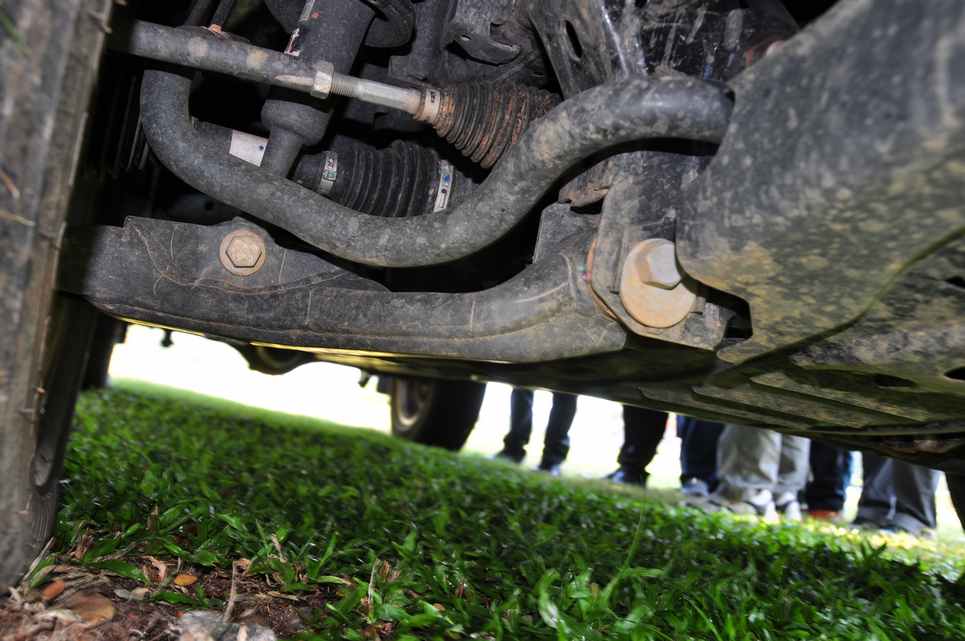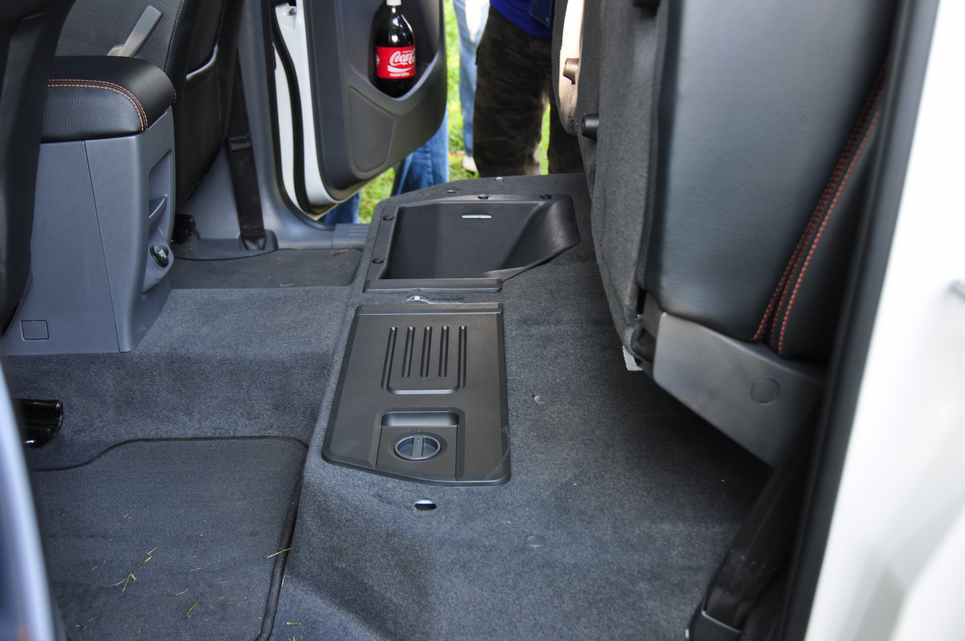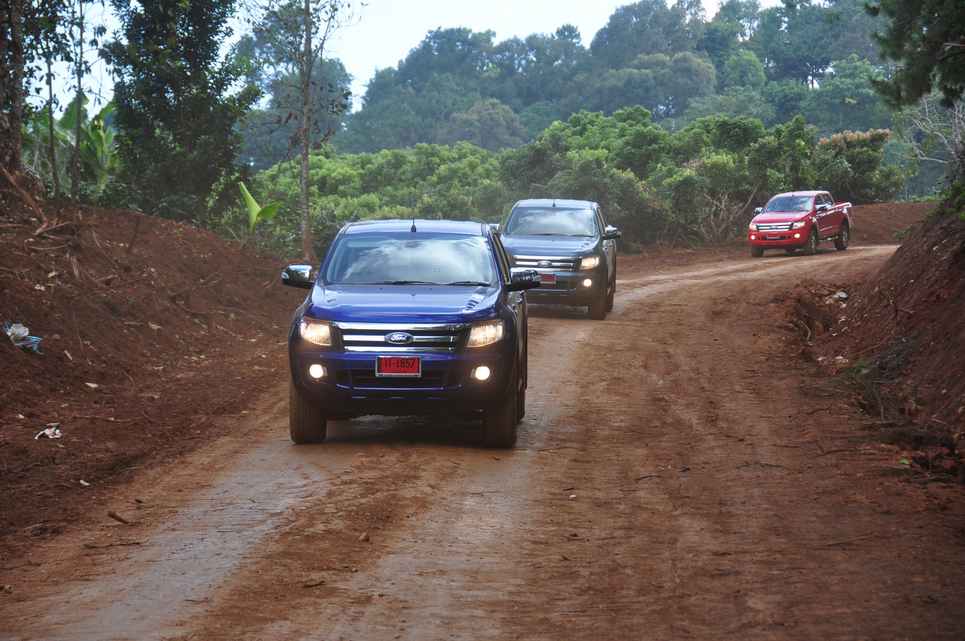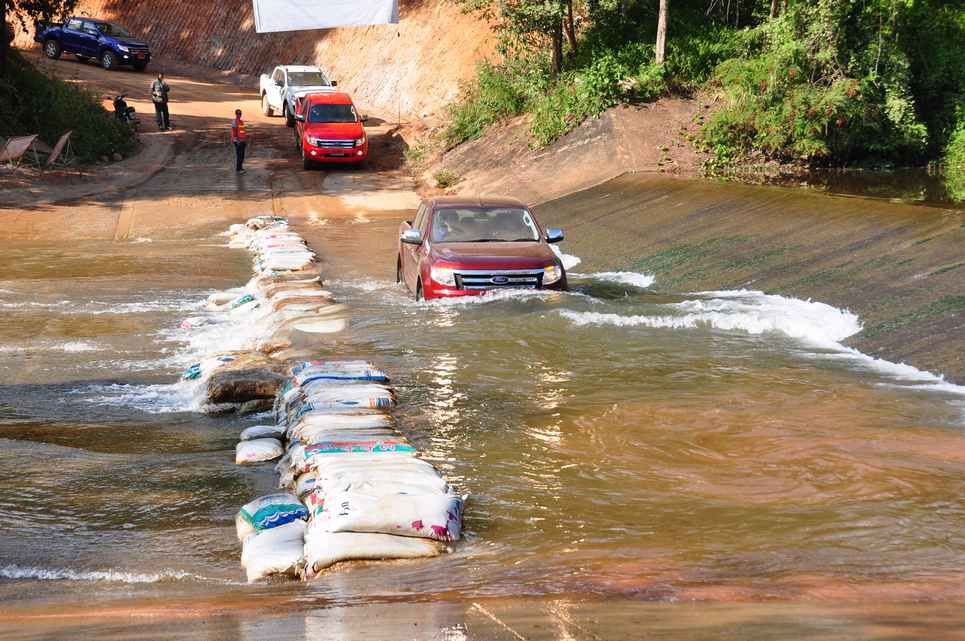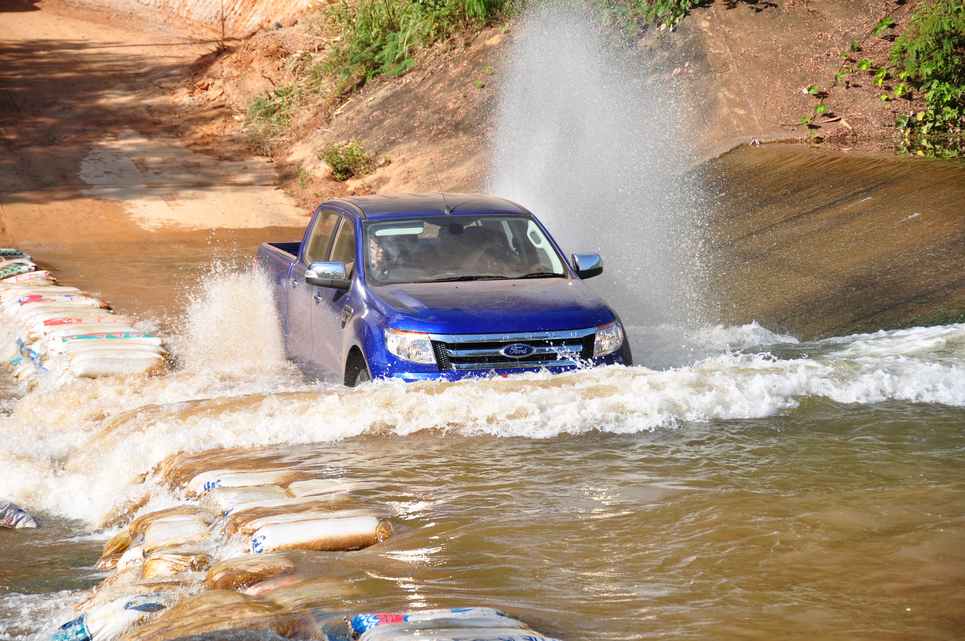New Ford Ranger – ETA Mid 2012
The new Ford Ranger is a great vehicle, much improved over the current model, but will only hit Malaysian showrooms around the middle of next year. Although the Ford plant in Rayong is not affected by the floods in Thailand, some parts of the supply chain are affected, the result being a six month or so delay in the production schedule.
Ford organized a drive for regional motoring media at Chiang Rai, and we did a circuit of 145 kilometres that started out from the Le Meridien in Chiang Rai, and went into the mountains north of the city for a cup of excellent coffee up in the mountains, 1,280 metres above sea level. Our drive took us on a mixture of highway, country roads and winding roads up into the hills, including a short dirt stretch and a water crossing.
The Ford Ranger for 2012 is all new, and was first introduced as a concept car at the Bangkok motor show earlier this year. According to Ford, the only things that are carried forward from the current model are a few bolts and nuts.
In terms of looks, the new Ford Ranger is totally different – whether it looks better or worse depends on whether you like a more ‘macho’ look or prefer a somewhat ‘softer’ look. Personally, I like the new shape, but what is more important are the refinements that come with it. There are a few variants available – basically there are three engine variants, two being diesel engines of 2.2 litre or 3.2 litre capacity, and the third being a petrol engine. The 2.2 litre 4-cylinder diesel variant has an output of 150 PS and a max torque of 375Nm, which is higher on both counts than that of the current 2.5 litre diesel available here, and buyers can choose to buy it in 4 X 4 or 4 X 2 configuration. The 3.2 litre version has an outstanding 200 PS and 470 Nm of torque coming from a 5-cylinder engine. Both engines are common-rail units with Variable Geometry turbo chargers, and variable valve timing on the exhaust cams. The petrol engine is a 2.5 litre naturally aspirated unit, with 166 Ps and 226 Nm. We are unlikely to see the petrol version here in Malaysia. The new engines are claimed to be more economical – we did not have a real chance to check out actual fuel consumption, but on the road trip, the fuel gauge only moved down about a quarter although we generally drove quite hard. What I did notice is that with the new drive train configuration, the engine turns at a lower speed for the same speed in relation to the current model, which in itself will contribute towards fuel economy. Besides, the new model now has an 80 litre fuel tank, which extends the range considerably – you can get close to a thousand kilometres per tank of diesel.
The Ford Ranger now comes with three gearbox options – you can opt for a 6-speed automatic transmission, a 6-speed manual, or a 5-speed manual. We expect the Malaysian models will be with the 6-speed auto and 6-speed manual, but then they may decide to continue the 5-speed manual here in a bare spec model.
Wheel sizes range from 16 inches to 17 inches to 18 inches – all the overall diameters are 777 mm (about 31 inches), and the size of the wheels varies with the different levels of trim. Again, we are not sure what is coming and what is not, but it is good to know there are options.
Driving Impressions
The new Ford Ranger is really very quiet on the inside. You can drive at 140 km/h on the road and still carry out an intelligent conversation without having to raise your voice. At 100 km/h, your engine is just ticking over at 1900 rpm.
We drove the 3.2 litre automatic, 2.2 litre 4 X 2, and the 2.2 litre 4 X 4 manual. Acceleration is slightly faster in the 3.2, but the 2.2 models are just as perky. I suspect the final drive ratios are slightly different in the two models – the Ford people were to revert to me on this, but have yet to do so. The variable geometry turbocharger gives the Ranger flexibility at low engine revolutions, and more power at the top. The variable valve timing on the exhaust cams also contribute in this area.
Overall handling is very good, thanks to a new rack and pinion steering system. I did push the Ranger quite hard around a couple of bends, and I must say the handling is very car-like. Even the steering wheel size has been reduced by about an inch or so. The handbrake, which used to be the umbrella type, is now changed to the regular type placed in the centre console. Interior controls are more car-like now, and you do tend to forget it is a truck.
Engineering-wise, the new Ford Ranger is the natural replacement of the current one – all that is lacking in the current model is addressed – the result is a very user-friendly machine that is more car than truck – although it will still be as tough as nails when the going gets tough.
What is new is traction control, reverse camera and reverse sensors, (certain models only), a new array of engines that are more powerful and fuel efficient, plus many other features, very small, but thoughtful items – such as adjustable camber and caster at the front, and a wading depth of 800mm.
We expect to get the Ranger for a more comprehensive test when it finally arrives – stay tuned.





